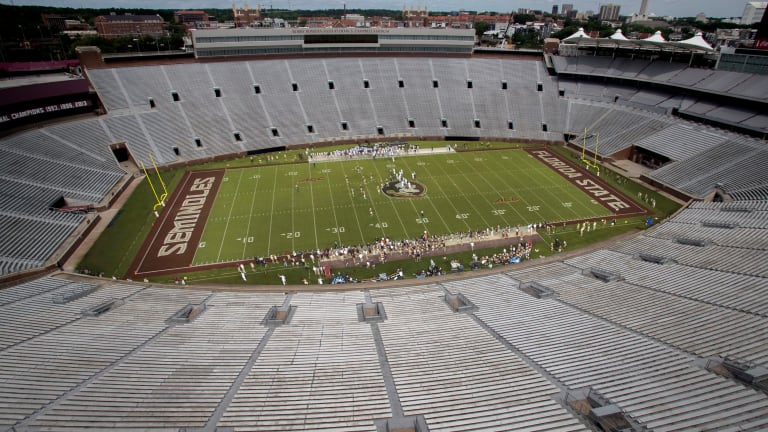
If College Football is Played This Fall, What Will it Look Like?

``What’s it going to look like?’’
That seems to be the question now about the 2020 college football season. Which is better than, ``Will there be a college football season this fall?’’
If, of course, college football can be played safely with all due respect to the peril of this viral pandemic.
There are still any number of scenarios that can pull the plug on college football. What happens if players or essential personnel test positive? That’s a key one. Also, if the community where a university is located has a viral flare-up, do college sports proceed?
One question already seems to be answered for now. Universities seem committed to holding classes this fall, even if they are often virtual classes. That has opened the door for college athletics.
If worst-case scenarios on top of what is already a worst-case scenario can be avoided, what would college football look like?
Baby steps are already being taken. Players—um, student-athletes—are being allowed to return to campus for voluntary workouts. Muckety-mucks are vowing to conduct football as usual.
It’s one thing when SEC officials vow to plow ahead. When Northwestern President Morton Schapiro told ESPN’s Adam Rittenberg that he expected all 14 Big Ten schools to suit up for football in the fall, that. . . just meant more.
Here’s the thing. We talk a lot about what a big business college football is—a business where $5 million salaries are routine for head coaches, where top assistants are paid $1 million and where top strength coaches make $500,000.
For all of our needling about the hypocrisy of calling college football ``an amateur sport,’’ the prospect of this incredible cash machine grinding to a halt is frightening. Because football pays for so many things. It’s one thing when a well-paid football coach takes a salary cut. It’s quite another when an entire non-revenue sport is eliminated.
And so, making the huge assumption that continued progress can be made without disastrous setbacks, what would college football look like?
First, if spectators are allowed, they will be few and (hopefully) far between. Depending on stadiums, I would expect 25 to 40 percent of usual crowds to allow for social distancing. I would advise schools to err on the low side, but I expect they won’t.
Who will get the tickets? The boosters who contribute the most. (And the ones who are the bravest.) It will be tricky for athletic departments, but they will figure it out. The biggest contributors may get season tickets; others will settle for selected games.
I believe they will try to play full schedules, including non-conference games. Big schools will cry crocodile tears about the need to help small schools by playing guarantee games. And then they will quietly renegotiate those guarantees.
I also believe the games will be sloppy. With all the practice time that has been missed, a lot of crazy things will happen on the field. That will be entertaining. And unpredictable.
On one hand, we would expect traditional powers with better athletes to deal with reduced practice time better than struggling programs that aren’t as adept athletically.
On the other hand, some clever coaches will find a way to take advantage of all the uncertainty.
Assuming the large assumption that college football can proceed without a major health disaster, I expect that people who watch college football from the comfort of their couch will enjoy a really entertaining season. If there are no spectators, I expect crowd noise to be included, like a laugh track for a sitcom.
There will be more wacky plays, more unfathomable upsets, more of the college football chaos that many of us find irresistible.
I also expect a lot of discussion about altering the rules for choosing a national champion. Everything from the criteria for choosing four teams to whether the playoff should be whittled to two teams.
But when all is said and done, I expect there will be a championship game—between Clemson and Alabama, Georgia or LSU.
The strongest programs will be best able to weather the incredible challenges brought by a pandemic. That has been true in who has been affected the most by Covid-19 in the world’s general population. And it will be true in the world of college football.